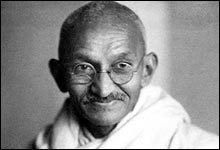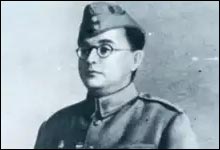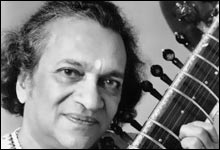GREAT INDIAN PERSONALITIES : Satyajit Ray

Ray's films remind us of Rajput miniatures, the natural beauty, flora and fauna arranged sequentially in frames. The Bengali culture has been standing on certain pillars in the post-Tagore era. The most well-known among them was certainly Satyajit Ray. Bengalis just do not see Ray as a world-class film director but a dynamic personality who redefined the cultural Bengal. Ray was not only one of the leading authors in this part of the country, he was equally famous for his artistic skills & his music direction in his films.
Born on 2nd May 1921, in one of the most illustrious families of Kolkata, Manik (his nickname) was brought up in a sphere of creativity. Upendrakishore Roy, the literary great, was his grand father while Sukumar Roy who composed the unforgettable Abol Tabol was his father. His alma mater was Bullygaunge Govt. High School. Then on he moved on to Presidency college & after a brief stint, he entered the Kalabhavan, the arts section of the Visva Bharati University, under the tutor ship of Nanadalal Bose & Binodbehari.
A plentiful and multitalented filmmaker, Ray directed 37 films, counting feature films, documentaries and shorts. Ray's first film, Pather Panchali, won 11 international awards, together with Best Human Document at Cannes. By the side of Aparajito and Apur Sansar, the film forms the Apu trilogy-widely called as Ray's magnum opus. Ray worked broadly on a collection of tasks, counting scripting, casting, scoring, cinematography, art direction, editing and scheming his own glory titles and advertising substance. Apart from creation films, he was a novel writer, publisher, illustrator, graphic designer and film critic.
His first job was that of a graphic artist but very soon he moved on to create his first masterpiece, 'Pather Panchali'. Aparajito, Apur sansar, Debi etc. followed and each added a new feather to his cap. His films not only reflect the tapestry of human psychology, but they brought modern Bengali lifestyle in focus. Ray was a versatile genius who was ahead of his time. His thoughts revolutionized Indian film arena as well as Bengali literature. He solely took Indian cinema to the Western viewers who earlier knew very little of Indian films .

Ray pictures are strikingly miscellaneous in their theme. He said in 1975, "Critics have often accused me of a grasshopperish tendency to jump from theme to theme, from genre to genre... rather than pursue one dominant subject in an easily recognizable style that would help them to pigeonhole me, affix me with a label...All I can say in self-defence, if one is needed, is that this diversity faithfully reflects my own personality and that behind every film lies a cool decision."
Each of his films brought loads of foreign & national awards. In the meantime he started writing detective stories for children. His literary career also covers of a collected works of short stories. Ray shaped two of the most admired characters in Bengali writing, namely Feluda, a professional detective, and Professor Shonku a scientist. He also wrote fairly an amount of short stories, which were in print as volumes of 12 stories. Most of his writings have now been translated into English, and are ruling a second generation of readers.
His sleuth Pheluda was an immediate hit. He even made films with his own characters & were widely admired.Ray acknowledged many most important awards in his memorable career, together with an Academy Award for lifetime accomplishment in 1991. In 1989, the French govt. awarded him their highest civilian award, Le'gion d'honour.Earlier he had already received Padmashree, Padmabhushan & Padmabibhushan. In 1992, he received the honorary Oscar for lifetime achievements. The same year he was awarded the Bharat Ratna.Satyajit Ray intended two typefaces titled Ray Roman and Ray Bizarre. Ray Roman won a worldwide contest in 1970. In definite circles of Kolkata, Ray sustained to be known as a renowned graphic stylish, fit into his motion picture career. Ray illustrated all his books and designed covers for them, as well as creating all advertising matter for his movies. On 23rd April 1992, he passed away leaving behind a huge legacy.


